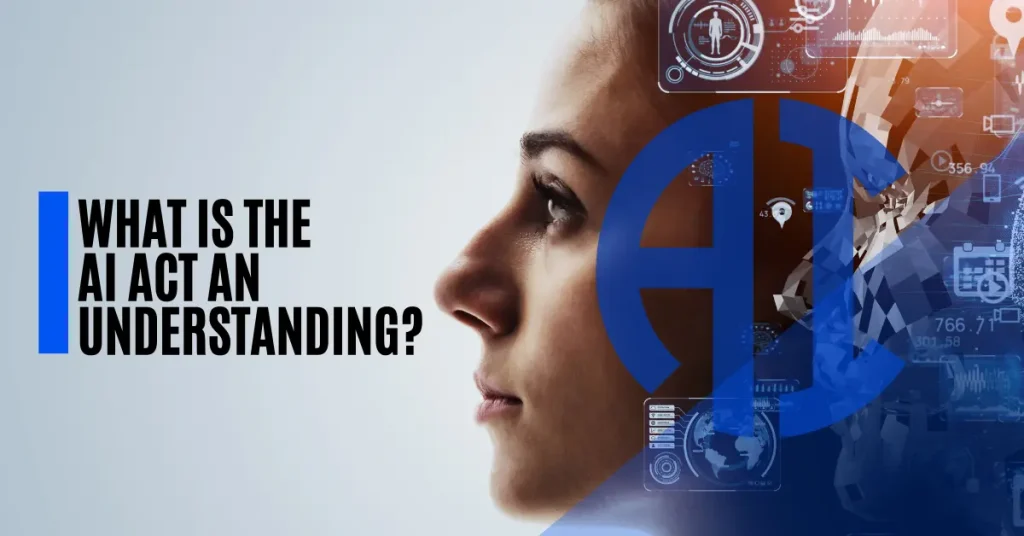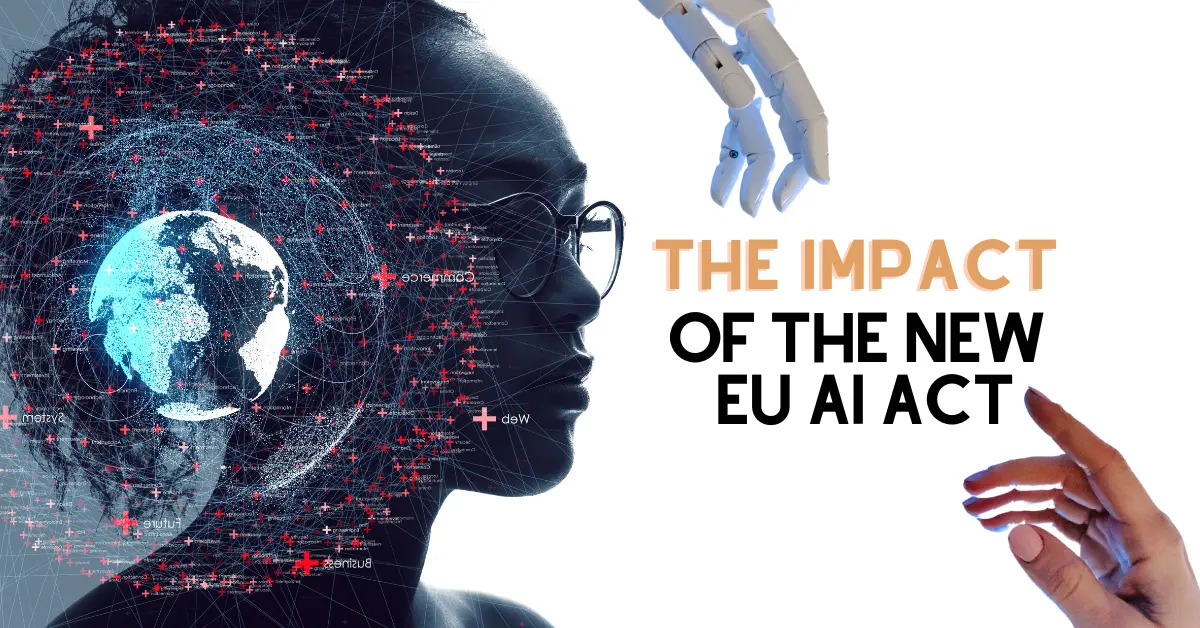The European Union’s Artificial Intelligence Act (AI Act) is poised to be the inaugural global legislation that oversees the development, implementation, and utilization of AI systems comprehensively.
In this article, we explore the functionality of the Act, its potential implications for businesses, and steps to take in readiness for its enactment
The EU’s Groundbreaking AI Act: A Landmark in Regulating Advanced Artificial Intelligence Systems
In a monumental move, the European Union has taken significant steps towards regulating the application of artificial intelligence (AI) to safeguard the rights of its citizens. Under the new law, specific uses of AI are set to be prohibited, particularly those posing threats to individuals’ rights. This article delves into the intricacies of the legislation, shedding light on its key provisions and implications.
Understanding the Scope of AI Act
What You Need to Know About the AI Act
The advancement of artificial intelligence (AI) has brought forth numerous benefits and innovations across various industries. However, with great power comes great responsibility, prompting the need for regulations to ensure the ethical and safe deployment of AI technologies. In response to this imperative, the European Union (EU) has drafted the AI Act, a comprehensive regulatory framework designed to govern the development, deployment, and use of AI systems within its jurisdiction.
The legislation targets various AI applications deemed detrimental to citizen rights. It particularly focuses on areas such as biometric scanning, categorization by policing and private organizations, and the creation of facial recognition databases through untargeted scraping of internet or CCTV footage.
What is Regulated?
The field of artificial intelligence (AI) has rapidly advanced in recent years, bringing about significant transformations in various sectors. With this rapid progress comes the need for regulatory frameworks to ensure the responsible development and deployment of AI technologies. The AI Act, introduced to address these concerns, plays a crucial role in regulating AI systems.

What is the AI Act an Understanding?
The AI Act is a regulatory framework proposed by the European Commission in 2021 and recently approved by the European Parliament. It aims to govern the use of AI technology, categorizing it into different risk levels and setting forth rules and guidelines for its deployment.
The AI Act provides a comprehensive framework for regulating AI systems. It defines “AI Systems” as machine-based systems designed to operate with varying levels of autonomy and adaptiveness. These systems infer, from the input they receive, how to generate outputs such as predictions, content, recommendations, or decisions that can influence physical or virtual environments. This broad definition aligns with the Organisation for Economic Cooperation and Development (OECD)’s Recommendation on Artificial Intelligence 2019, indicating a global consensus on the need for regulation.
The Act also focuses on regulating General-Purpose AI (GPAI) models, which are AI models capable of competently performing a wide range of distinct tasks. These models, also known as foundational models, can be integrated into various downstream systems or applications. Notable examples of GPAI models include OpenAI’s Chat GPT and Google’s Gemini. The specific regulation of GPAI models acknowledges the significant risks they pose when highly capable and widely used, necessitating tailored regulatory measures.
Objectives of the AI Act
The primary goal of the AI Act is to ensure the safety of AI systems and uphold the fundamental rights of EU citizens. It seeks to achieve this by introducing measures to mitigate risks associated with AI use and by imposing restrictions on certain applications deemed high-risk.
Key Provisions of the AI Act
Risk Categorization
The AI Act categorizes AI systems into various risk levels, ranging from “unacceptable” uses, which are outright banned, to high, medium, and low-risk applications. This classification helps determine the level of regulation and oversight required for each type of AI system.
Ban on Certain Uses
Certain AI applications deemed to pose an “unacceptable risk” are banned under the AI Act. These include uses that could potentially infringe upon fundamental rights or cause harm in sensitive areas such as healthcare, education, and public services.
Transparency and Accountability
The AI Act introduces new transparency rules, requiring developers and users of AI systems to provide clear documentation and explanations of how these systems operate. Additionally, it mandates risk assessments for high-risk AI systems and emphasizes the importance of human oversight in their deployment.
Regulation of GPAI Models
The specific regulation of GPAI models reflects the EU’s recognition of the unique challenges posed by these highly capable AI systems. While GPAI models offer tremendous potential for innovation and advancement, they also carry inherent risks, including biases, privacy concerns, and potential misuse. Therefore, the AI Act seeks to ensure that GPAI models are developed and deployed responsibly, taking into account their wide-ranging impact on society.
By subjecting GPAI models to regulatory oversight, policymakers aim to strike a balance between promoting innovation and protecting societal interests. This approach involves implementing measures to assess the safety, fairness, and transparency of GPAI models throughout their lifecycle. Additionally, regulatory frameworks may include provisions for regular auditing, certification, and compliance monitoring to ensure adherence to established standards.
High-Risk AI Systems
Artificial Intelligence (AI) systems have revolutionized various industries, but with great power comes great responsibility. High-risk AI systems, in particular, warrant careful consideration due to their potential impact on safety, privacy, and fundamental rights. In this article, we delve into the complexities of high-risk AI systems, exploring their categories and the obligations they entail for both providers and users.
AI systems categorized as high-risk are those with the potential to cause significant harm to individuals or society if not properly regulated and monitored. These systems operate in sensitive domains where errors or biases could have serious consequences.
Categories of High-Risk AI Systems
The first category encompasses AI systems integrated into products already subject to the European Union’s stringent product safety laws. This includes AI used in medical devices, vehicle security systems, toys, marine equipment, and certain types of machinery. The aim is to ensure that AI components within these products meet the highest safety standards.
The second category involves AI systems explicitly identified as high-risk in the AI Act. These encompass a wide range of applications, including biometric identification, critical infrastructure management, educational and vocational training, provision of essential public and private services, and law enforcement activities. Providers of such AI systems must adhere to specific regulations to mitigate potential risks effectively.
Also Read : Exploring Android 15: Google Deepens Partnership with Samsung
Prohibited AI Practices
The law specifically prohibits the following AI applications:
- Utilization of sensitive characteristics for profiling individuals.
- Untargeted scraping of data for facial recognition purposes.
- Employment of AI for emotion recognition in workplaces and schools.
- Implementation of social scoring systems.
- Deployment of predictive policing algorithms.
- Any AI use intended to manipulate human behavior.
Exemptions and Oversight
While the law imposes strict regulations, exemptions are made for law enforcement in exceptional cases, such as addressing serious crimes or locating missing persons. However, such exemptions necessitate oversight by judicial authorities to ensure adherence to legal standards.
Implementation and Timeline of AI Development
The enactment of this law carries profound implications for AI developers and stakeholders. It mandates transparency in AI development processes and imposes additional responsibilities on companies dealing with high-risk AI models.
Transparency and Compliance
The law necessitates transparency in AI model development, ensuring compliance with copyright and privacy regulations. Companies involved in critical sectors like infrastructure, education, and healthcare must adhere to stringent reporting and evaluation standards.
Redefining Governance
The AI Act signifies a pivotal moment in governance, linking AI development to societal values and necessitating a reevaluation of existing governance models. Politicians like Dragos Tudorache highlight the law’s role in paving the way for a new governance paradigm centered around technology.
Gradual Rollout
The AI Act is set to take effect gradually over the course of several years. This phased approach allows stakeholders time to adapt to the new regulations and implement the necessary changes to ensure compliance.
Enforcement
Enforcement of the AI Act will be overseen by regulatory authorities within the EU. These authorities will be responsible for monitoring compliance, investigating potential violations, and imposing penalties for non-compliance.
Penalties for Non-Compliance with the AI Act: Understanding the Consequences
Penalties for Non-Compliance
Maximum Penalty Overview
The penalties for non-compliance with provisions concerning prohibited AI practices in the AI Act are substantial. The maximum penalty entails a fine of up to 7% of the producer’s annual global turnover or 35 million Euros, whichever is higher. Such hefty fines underscore the seriousness with which non-compliance is viewed under the AI Act.
Factors Influencing Penalty Severity
Several factors can influence the severity of penalties imposed for non-compliance. These may include the extent of harm caused by the non-compliant AI system, the level of negligence demonstrated by the producer, and the history of previous violations.
FAQs (Frequently Asked Questions)
- What prompted the EU to enact the AI Act?
- The EU recognized the need for comprehensive regulation to address the potential risks associated with AI technology and to protect the rights of its citizens.
- How will the AI Act impact AI development and innovation in the EU?
- While the AI Act imposes certain restrictions and requirements, it also provides clarity and guidelines for developers, fostering responsible innovation in the field of AI.
- What are some examples of AI applications classified as “high risk”?
- AI applications in sectors such as healthcare, education, and public services, where the potential for harm or infringement upon rights is significant, are considered high risk under the AI Act.
- How will the new law impact AI innovation in Europe?
- The law aims to balance innovation with ethical considerations, fostering responsible AI development in Europe.
- How will the AI Act influence global AI governance standards?
- Europe’s proactive approach to AI regulation sets a precedent for other nations, potentially shaping international AI governance frameworks.
- Why is the regulation of GPAI models important?
- GPAI models, such as Chat GPT and Gemini, pose significant risks if highly capable and widely used, necessitating tailored regulatory measures to ensure responsible development and deployment.
- What are the implications of AI regulation for businesses?
- AI regulation requires businesses involved in AI development and deployment to comply with regulatory requirements, adhere to ethical guidelines, and prioritize responsible AI practices to avoid legal liabilities and reputational risks.
- How can AI regulation benefit society?
- AI regulation aims to safeguard fundamental rights, promote inclusivity, fairness, and accountability in AI use, and stimulate innovation by providing clear guidelines and incentives for responsible AI development.
- What distinguishes high-risk AI systems from other AI applications?
- High-risk AI systems operate in sensitive domains where errors or biases could have significant consequences on individuals or society.
- How can users mitigate risks associated with high-risk AI systems?
- Users should follow provider instructions, implement human oversight, monitor system operation, and retain relevant records for accountability.

